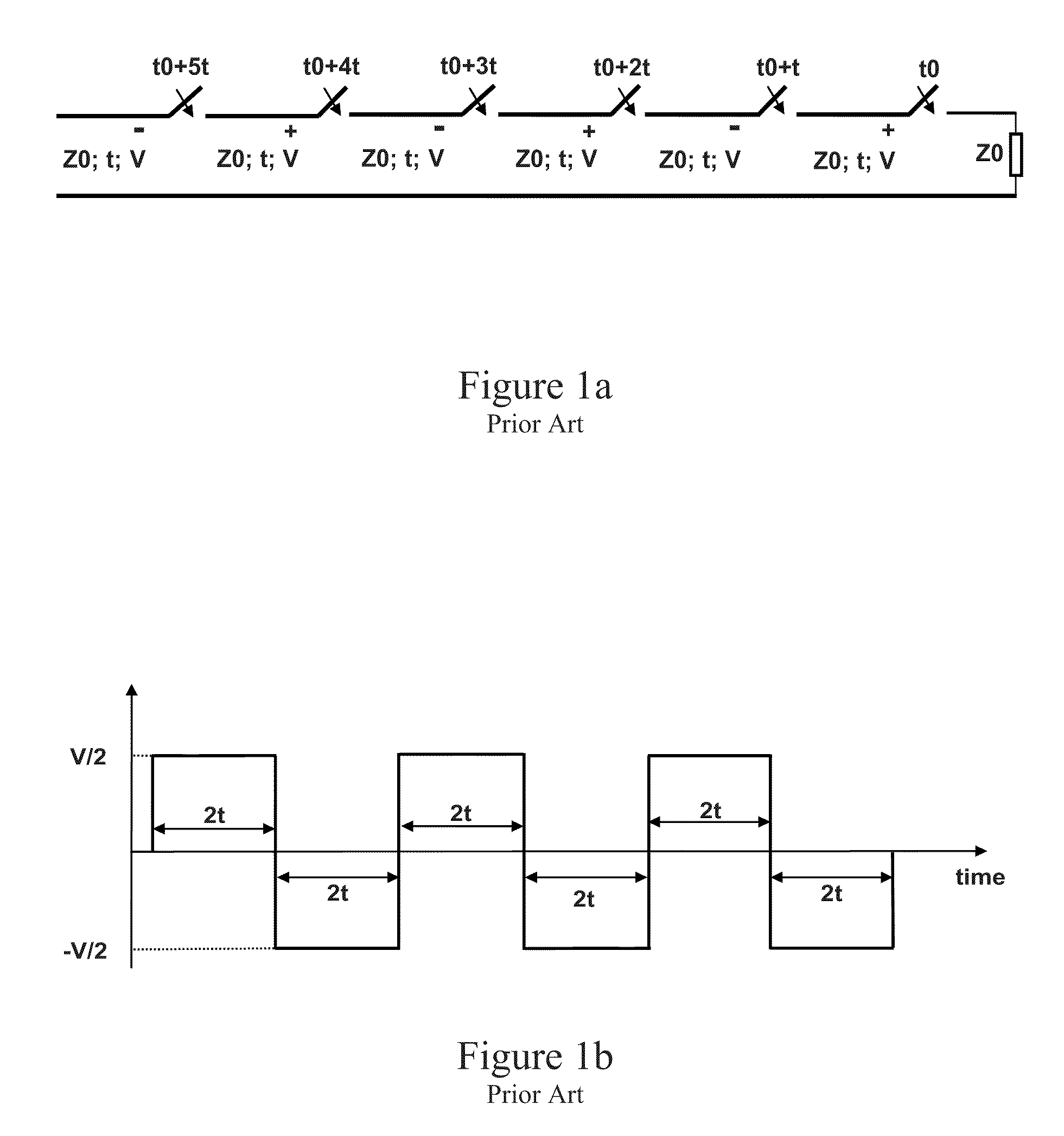Compact multi-cycle high power microwave generator
a generator and multi-cycle technology, applied in the direction of pulse generator, pulse train generator, pulse technique, etc., can solve the problems of reduced switching number, reduced switching frequency spectrum, and serious switch selection limitation, and achieve the effect of increasing the frequency spectrum of the generated pulse train and variable pulse width
- Summary
- Abstract
- Description
- Claims
- Application Information
AI Technical Summary
Benefits of technology
Problems solved by technology
Method used
Image
Examples
Embodiment Construction
[0081]One embodiment of the present invention is illustrated in FIG. 9. In this generator, N alternately charged sections with equal characteristic impedances (the same as load impedance) provide N bipolar pulses on the load. All switches should be closed simultaneously. Also, switches with the same potential with respect to a common conductor could be connected together and replaced by a single switch in a proper design. The interconnection transmission lines between oppositely charged line sections are non-charged and should have the same impedance as the charged lines. These lines induce separation in time between bipolar pulses. Because all waves propagate inside the structure, all sections could be combined with common conductors in a very compact design without any lines between sections, as illustrated in FIG. 10.
[0082]One of the significant improvements over known multi-cycle generators is simultaneously implementing compactness, minimum hold-off voltages on switches, and a ...
PUM
 Login to View More
Login to View More Abstract
Description
Claims
Application Information
 Login to View More
Login to View More - R&D
- Intellectual Property
- Life Sciences
- Materials
- Tech Scout
- Unparalleled Data Quality
- Higher Quality Content
- 60% Fewer Hallucinations
Browse by: Latest US Patents, China's latest patents, Technical Efficacy Thesaurus, Application Domain, Technology Topic, Popular Technical Reports.
© 2025 PatSnap. All rights reserved.Legal|Privacy policy|Modern Slavery Act Transparency Statement|Sitemap|About US| Contact US: help@patsnap.com



